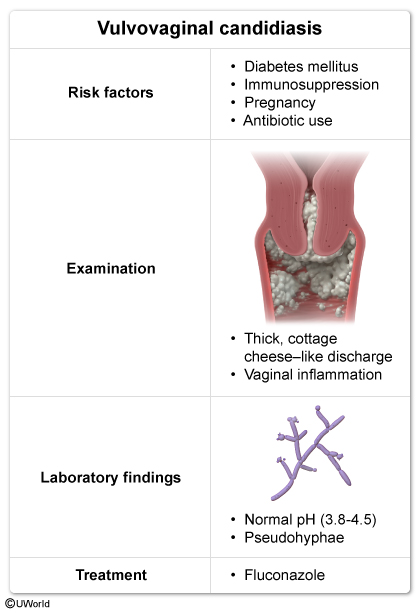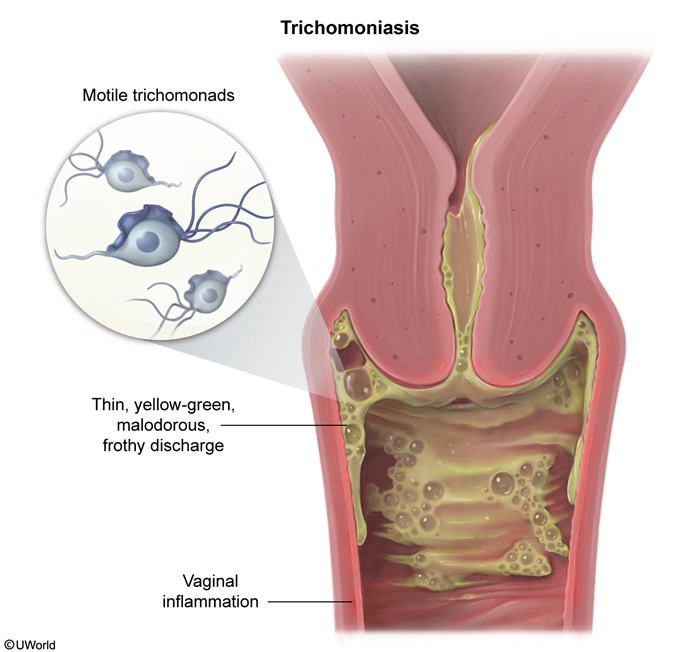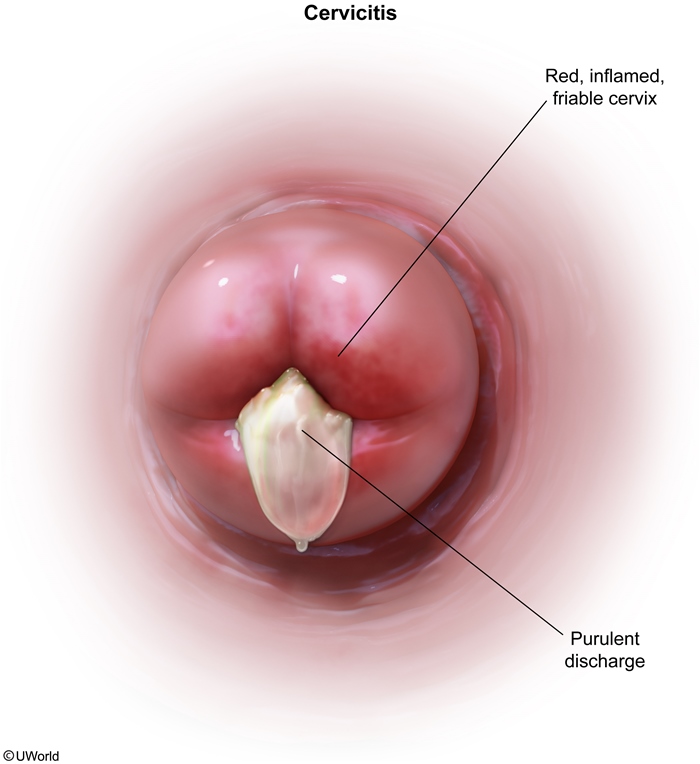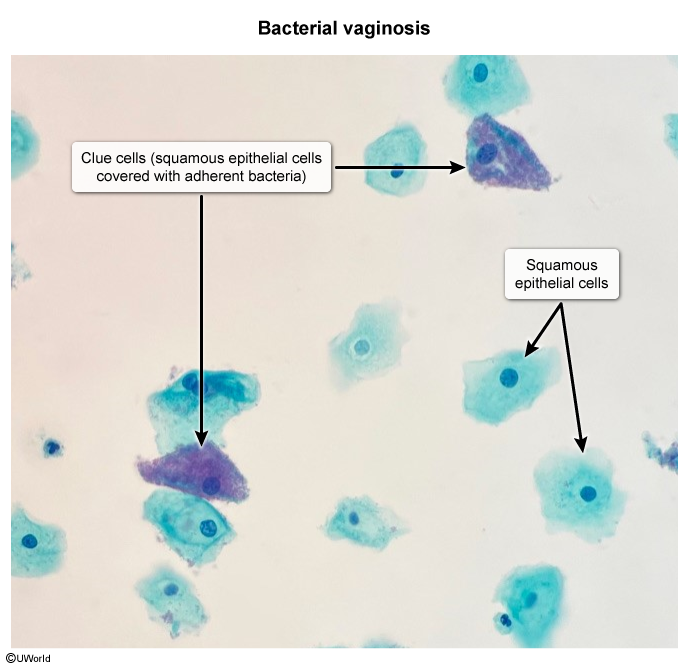Bacterial Vaginosis
Article Sections
Introduction
Bacterial vaginosis (BV) is one of the most common causes of abnormal vaginal discharge. It occurs due to alterations in the normal vaginal microbiota, including a decrease in physiologic lactobacilli, an increase in vaginal pH, and overgrowth of anaerobic bacteria. The increased pH and bacterial overgrowth lead to increasing malodorous vaginal discharge.
Pathophysiology and risk factors
The normal vaginal flora consists mostly of Lactobacillus species, which produce lactic acid and hydrogen peroxide to maintain the normal acidic environment of the vagina.
BV occurs when the normal vaginal microbiota are disrupted by a decrease in Lactobacillus spp. and subsequent overgrowth of anaerobic bacteria, particularly Gardnerella vaginalis; other implicated bacteria include Prevotella spp., Bacteroides spp., and Peptostreptococcus spp. The increase in anaerobic bacteria causes increased vaginal pH (>4.5) and increased amine production. This, in turn, causes the characteristic odor and increased vaginal epithelial cell exfoliation, resulting in increased vaginal discharge.
Continue Learning with UWorld
Get the full Bacterial Vaginosis article plus rich visuals, real-world cases, and in-depth insights from medical experts, all available through the UWorld Medical Library.
Figures



Images
